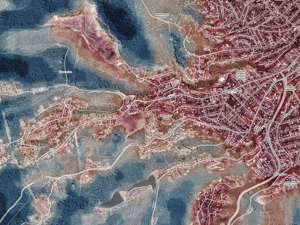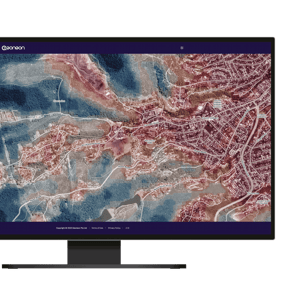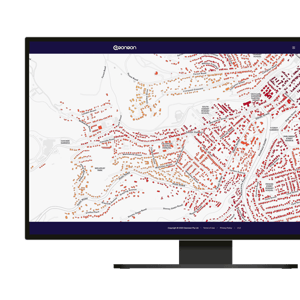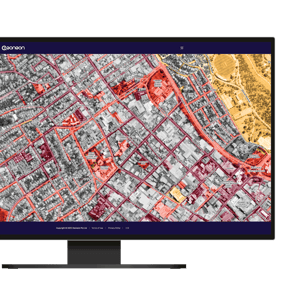Smarter Vegetation Intelligence. From Space to Street Trees.

Smarter Heat Intelligence. From Hotspots to Resilient Cities.
What is Geoneon Heat?
Geoneon Heat identifies urban heat hotspots, measures exposure of people and infrastructure, and pinpoints where greening delivers the greatest cooling benefit.
Built for councils, governments, and planners, it transforms complex environmental and demographic data into clear, actionable insights — underpinned by a set of geospatial indices — helping cities design healthier, safer, and more climate-resilient communities.
What Can You Do with Geoneon Heat?
Geoneon Heat helps governments and planners move from identifying heat hotspots to implementing targeted, evidence-based cooling strategies.
Where are the hottest places?
Maps land surface temperature hotspots across cities, helping planners identify priority areas for cooling and adaptation measures.

Which communities face the greatest risk?
Combines building-level heat exposure with social vulnerability to pinpoint neighbourhoods where residents are most at risk during extreme heat events.

Where should we green first?
Pinpoints canopy deficit areas where planting trees or adding shade delivers the greatest cooling benefit, ensuring investments achieve maximum impact.

From Heat Maps to Cooling Strategies
Visual comparisons show how Geoneon Heat turns raw environmental data into actionable insights. With simple before/after views or scrollable overlays, complex indices become clear strategies for resilience and planning.
Heat Susceptibility
See how everyday urban form translates into measurable heat hotspots, with the Heat Susceptibility Index highlighting areas most prone to extreme surface temperatures.


Residential Heat Risk
The Residential Heat Risk Index combines exposure and vulnerability to reveal where residents face the highest danger during heat events.


Greening Prioritisation
Residential heat risk with existing canopy coverage help to identify priority zones for tree planting or shading — showing where greening delivers the greatest cooling benefit.



National Award for Planning Excellence
Geoneon, with UTAS, City of Launceston, and WSP, won the 2025 National Award for Planning Research Excellence from the Planning Institute of Australia for the Urban Greening Strategy — recognised for innovation, collaboration, and tackling heat resilience through urban trees and remote sensing.
From Science to Scalable Solutions
Geoneon Heat is grounded in peer-reviewed methods from the scientific literature, adapted into proprietary algorithms to ensure scalability, efficiency, and consistency across regions. Our indices are derived from validated earth observation and demographic datasets, tested alongside councils and agencies, and aligned with observed heat events and planning frameworks.
Results are delivered in formats that fit your workflow making it simple to move from analysis to action:
- GeoTIFF / Shapefiles
- Webservices (WMS/WFS)
- Webmaps
Applications
Bhutan Forest Fire Exposure Index: Enhancing Resilience Through Geospatial Insights
Case Study: Infrastructure Vulnerability to Climatic Disasters in Bhutan
Case Study: Developing an Urban Forest Strategy for the City of Launceston

Ready to Map Urban Heat and Build Resilience?
Whether you are targeting a single neighbourhood or planning for an entire city, Geoneon Heat delivers actionable indices and insights to guide cooling, adaptation, and healthier community design.